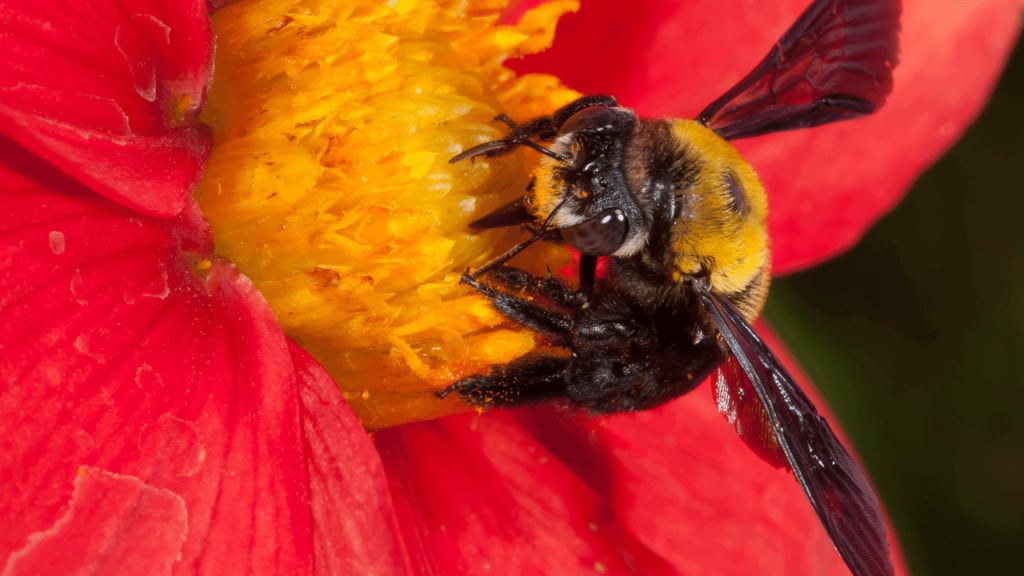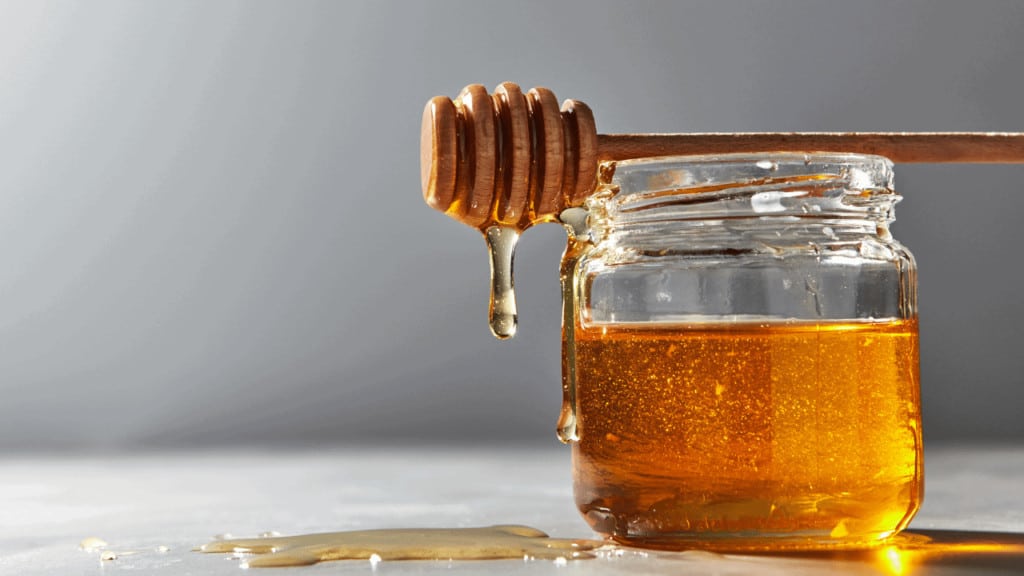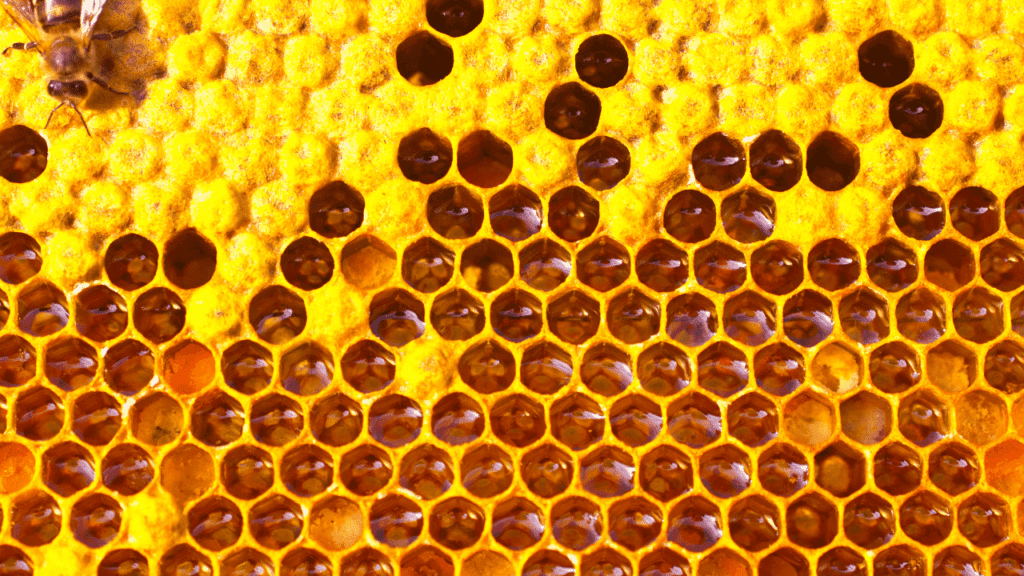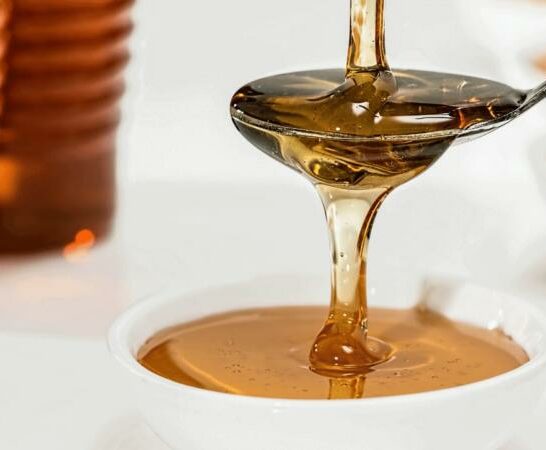For years now, I’ve found that I end up with sticky fingers whenever I deal with honey in any capacity.
While much of this has to do with my own messiness, no doubt, it has left me wondering why honey is sticky and what makes it that way.
Determined to put this question to bed once and for all, I’ve done some research into the components that make up honey and how they bond together to form the thick liquid gold gifted to us by bees.
Read on to find out more.
Why is honey sticky?
Honey is sticky because of a process known as hydrogen bonding, as well as because of its viscosity. Hydrogen bonding is the electrostatic process whereby hydrogen molecules are attracted to less-charged molecules, like the oxygen particles on our skin, and bond with them to create the feeling we know as adhesion.
In addition to this, the chemical make-up and intermolecular forces of honey give it its thick liquid viscosity, which adds to its stickiness.
What is honey made of?

Honey forms part of a select number of foods known as supersaturated solutions.
While it comprises no less than 181 different chemical components, chief among these are fructose and glucose, both monosaccharides, also known as simple sugars.
Water, conversely, only comprises between 15% to 18% of honey’s compound make-up.
This is important because water plays a big role in how sugary substances dissolve and how dense they are.
Regular white sugar in water will dissolve to a certain degree, but not completely. Heating water, however, changes the chemical reaction of sugar by dissolving it.
Honey is formed similarly, although it doesn’t involve a pot and boiling water.
Instead, it involves the pharmacists of the natural word – bees.
In addition honey’s shelf life seems to be eternal.
According to the Smithsonian Magazine honey found in Egyptian tombs was still preserved after thousands of years.
The reasons are hydrogen peroxide, its acidity, and the lack of water that seem to work together in perfect harmony.

Before honey becomes honey, it is nectar, which is 80% water. Nectar is a thin liquid that is colorless and not as sweet or sugary as honey.
When bees get hold of nectar, they use enzymes (called invertase) to convert its naturally occurring sugar (sucrose) into simple sugars like fructose and glucose.
This process is called hydrolysis.
From here, the nectar is transferred from forager bees to house bees, all of which drink and regurgitate the honey until almost all of the water has evaporated, and a super-concentrated solution remains.
Because it is so saturated, honey has a high viscosity, meaning it is a thick substance that moves slowly. Viscosity is defined as a fluid’s resistance to flow.
What about viscosity makes honey feel sticky?

Stickiness, also known as adhesion, is the result of a process called hydrogen bonding.
We know that honey is full of simple sugars and very little water, but what about this composition makes it feel sticky on our skin?
In honey, millions of oxygen and hydrogen molecules band together to form hydrogen bonds.
Sugar bonds beautifully with water, and the small percentage of water in honey is almost all bonded to the chemical compounds that comprise it.
These bonds are what cause the viscosity we discussed in the previous section.
Honey’s resistance to flow results from hydrogen bonds uniting the atoms and particles that make it up.

What we view as stickiness is just honey doing a magnificent job of adhering to itself.
Water, conversely, does not stick to itself the way that honey does and is, therefore, less dense.
The intermolecular activity of water is less than that of all the sugars and the water found in honey.
You can see this when you pour each liquid out of a jug. Water will run quickly and feel very fluid, whereas honey moves slowly and thickly.
The intermolecular activity in honey is far more cohesive than in water.
But what has any of this got to do with honey sticking to our skin?
Well, just like honey and water, our skin contains a whole world of its own molecular activity.
Much like the hydrogen bonds at play internally in honey, we have molecules in our skin that it will bind with when it makes contact.
The process of honey adhering to our skin, causing that sticky feeling, is a result of hydrogen bonding, which in turn is a consequence of supersaturated sugars making honey highly viscous.
Frequently Asked Questions About Why Honey is Sticky
Why does honey crystallize?
Honey crystallizes when its naturally-occurring glucose ceases to be dissolved and solidifies instead. This generally happens when the glucose content of honey separates itself from the water content simply because there isn’t enough water present to keep it in its dissolved form. It’s perfectly normal, and your honey won’t be spoilt.
Is honey sweeter than sugar?
Honey is slightly sweeter than normal table sugar. This is because honey contains higher levels of glucose and fructose, which are simple sugars with a sweeter taste. Needless to say, honey is a healthier alternative to refined sugar as it contains other vitamins and nutrients too.
How much honey does a bee produce in a lifetime?
The amount of honey produced by one bee in its lifetime is roughly a tablespoon’s worth. However, this is not an exact science as the process from nectar to honey involves the teamwork of the entire hive, rather than just one bee.
Conclusion
The next time you have that sticky feeling on your fingers from spilled honey, spare a thought for the immense about of science that goes into producing it.
Bees are nothing short of incredible, especially when it comes to their chemical engineering prowess.
To date, scientists are still trying to figure out how to replicate bees’ natural talents.

